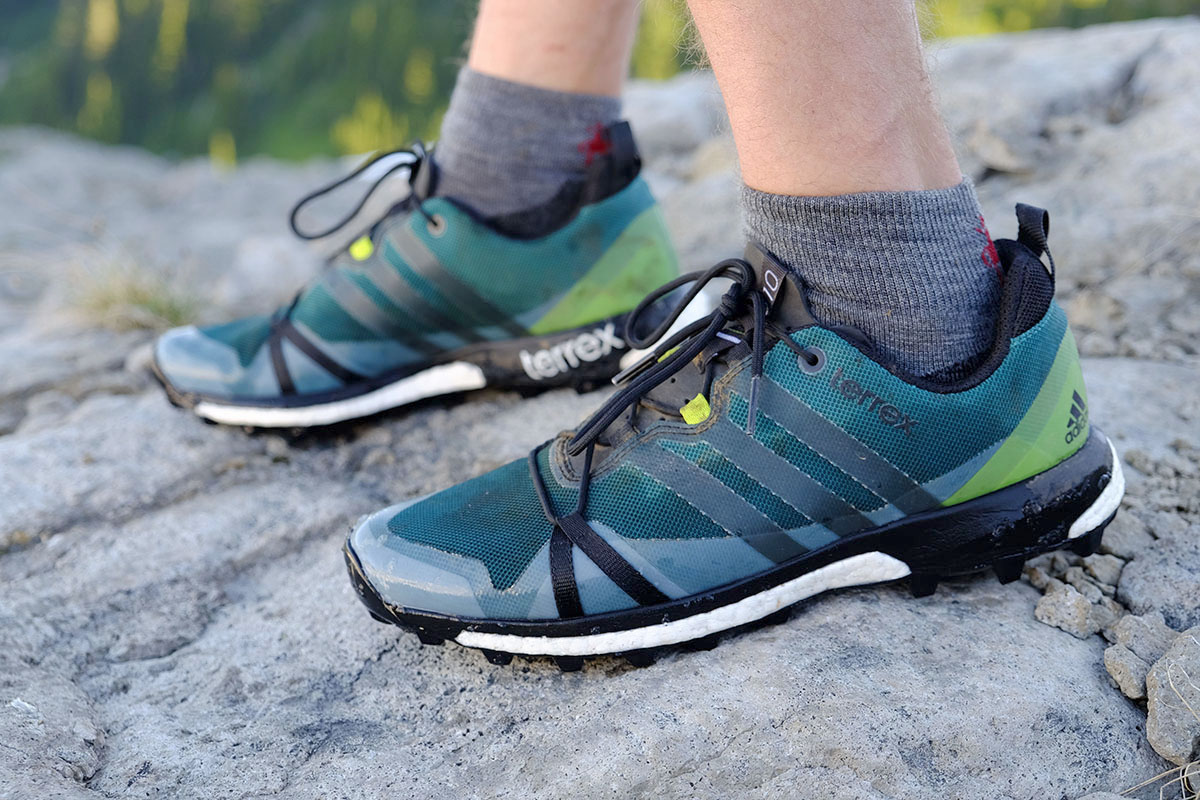
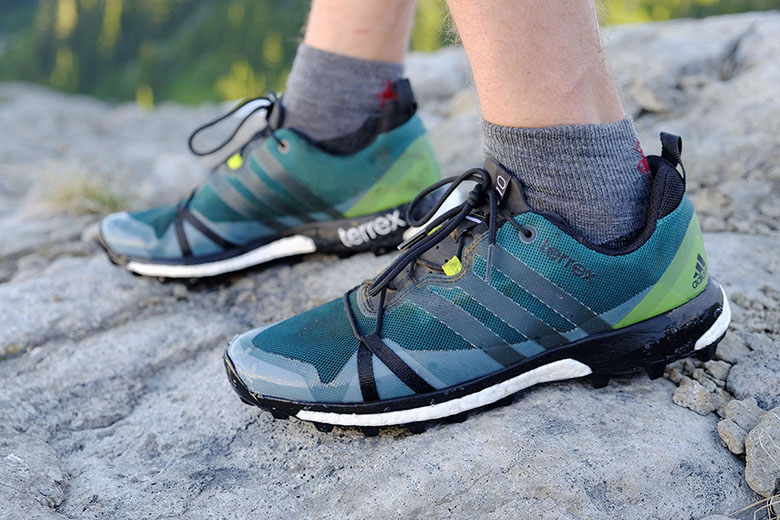
David Wilkinson


David Wilkinson
The new Terrex Agravic is further proof that Adidas can crossover from track and road running to the trails. Featuring their proprietary Boost midsole, the shoes are well cushioned and comfortable despite having a low profile. The Agravic is one of Adidas Outdoor's more aggressive designs, with substantial lugs and a modestly stiff build, but I’ve found the shoes to be one of a select few that’s equally at home on both rough and non-technical trails. With a durable construction, they’re also great for lightweight hiking and backpacking. Below we break down the Agravic's traction, durability, fit and comfort, and more. To see how the Terrex Agravic stacks up to the competition, see our comparison table and article on the best trail-running shoes.
In two months with the Adidas Outdoor Terrex Agravic, I’ve worn them on everything from runs on steep and rocky single track to fastpacking in snow and mud. Across it all, I have found the traction to be exceptional. In fact, few shoes we’ve tested are so capable on variable surfaces (one being the La Sportiva Bushido, which happens to be our favorite shoe for mountainous terrain). The Terrex Agravic is not specialized like the mud-loving Salomon Speedcross 4, but its all-around nature works better for our purposes in Washington State, where it’s consistently wet and muddy on the west side of the Cascade Mountains and dry and rocky on the east side.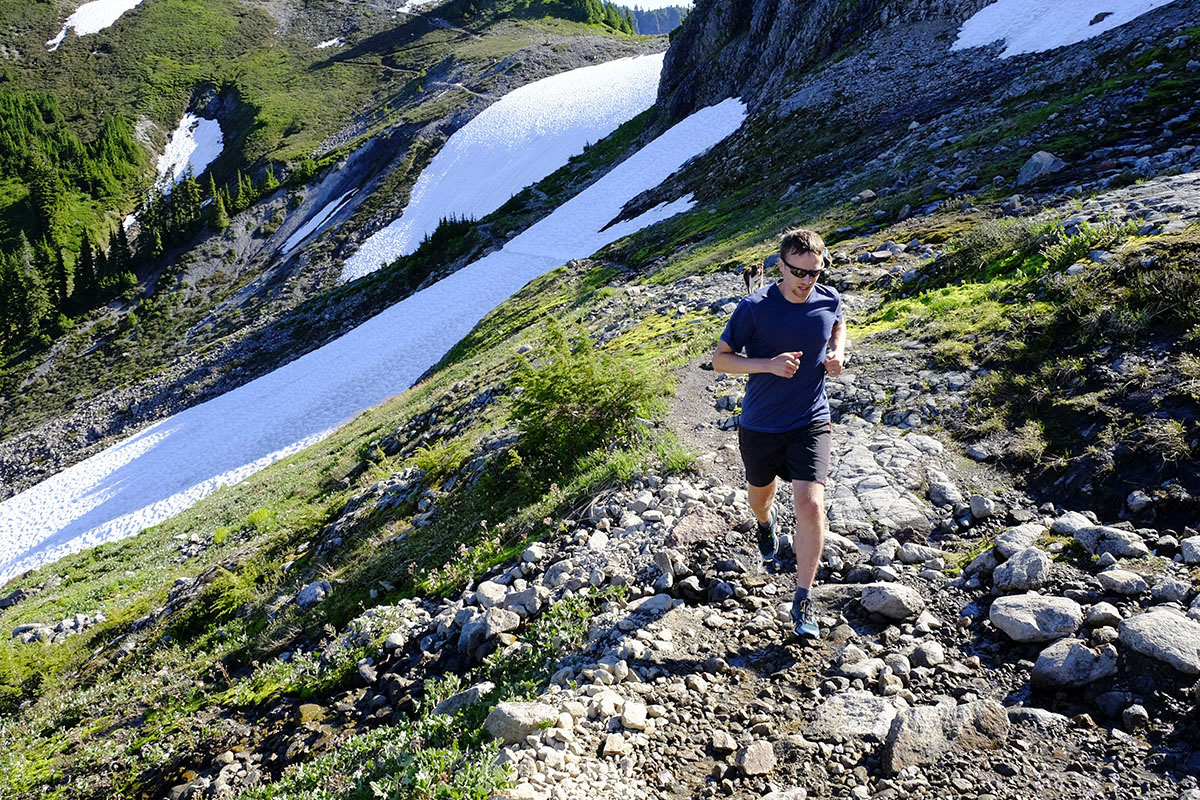
Adidas employs the popular car and bike tire brand Continental for its outsole rubber, and the specific tread on these shoes mimic the pattern of a mountain bike tire. While it may seem like a gimmicky concept, the compound is exceptionally sticky and the open lug design works well for mountain running. Despite the hard use over more than 120 miles, the soles are wearing evenly and not excessively.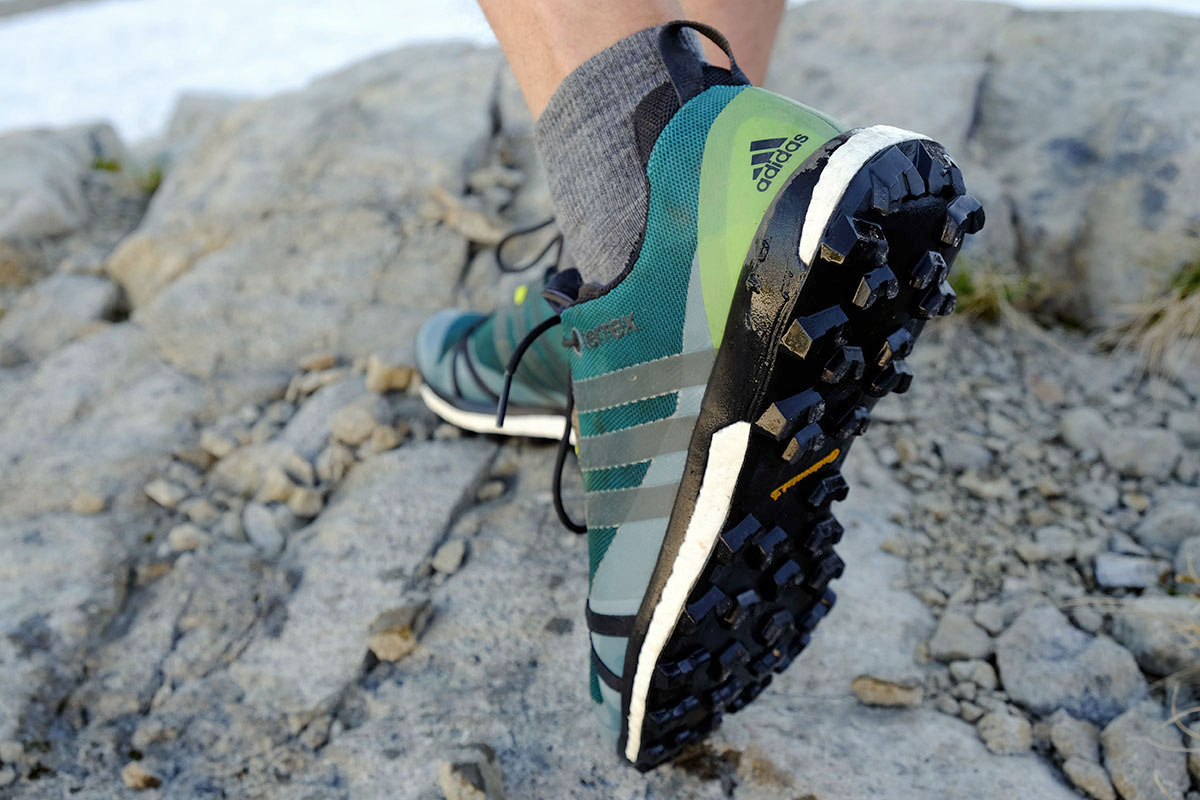
With a hard face textile upper fabric, welded overlays, and solid toe and heel protection, the Terrex Agravic is one of the more durable trail shoes on the market. I’ve collected my fair share of nicks in the rubber outsole from rocks, but the rest of the shoe still looks almost brand new. More, the tightly woven fabric does a decent job shedding light moisture and snow. Even with this non-waterproof model (there is a Gore-Tex version), my feet stayed relatively dry after crossing a few surprise snowfields near Mount Baker.
As a consequence of the beefed-up construction, the Agravic’s are a little heavy for extended runs. On our scale, the shoes weigh 1 pound 7.2 ounces in a men’s size 9—for reference, the La Sportiva Bushido’s are 1 pound 5 ounces, while ultralight shoes like the Altra Lone Peak 3.0 are 1 pound 0.6 ounces. Over short to medium distances and even as a fastpacking shoe, the extra weight was hardly noticeable, but I found myself wishing for something lighter once I reached a half marathon distance.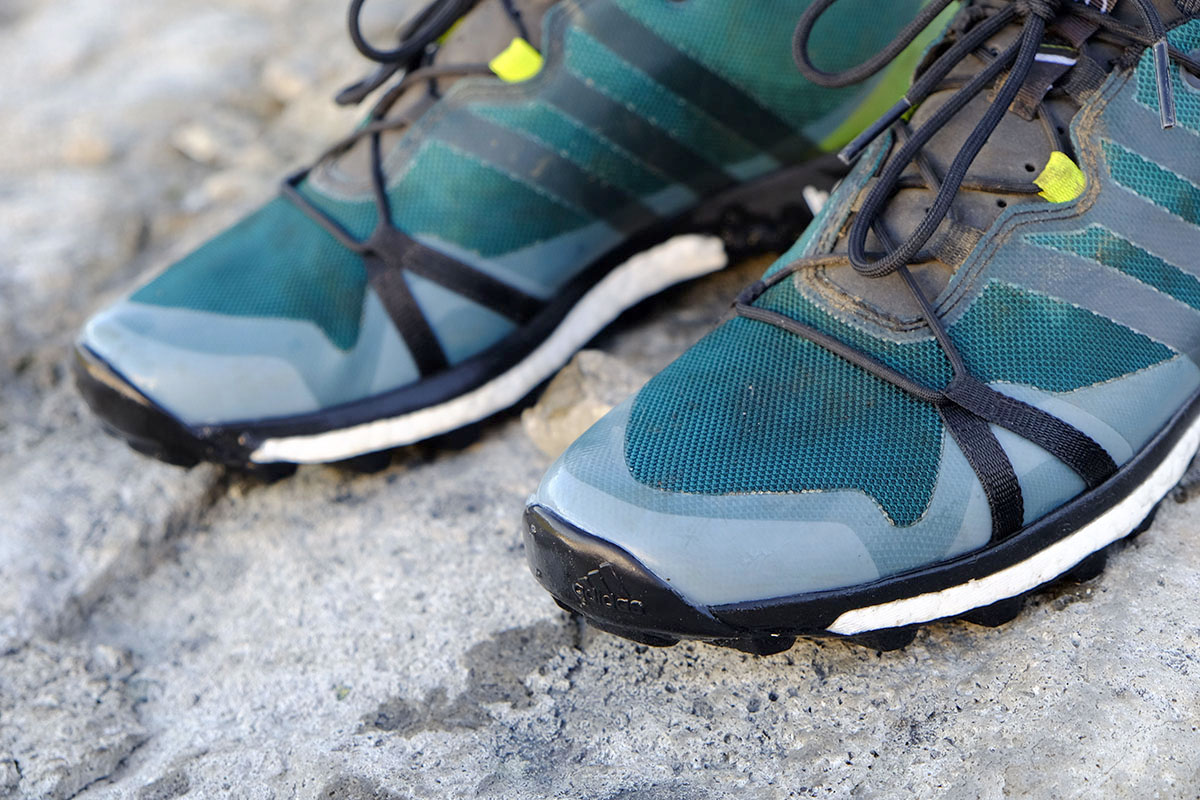
Very few mountain-ready shoes offer excellent ventilation, and the Terrex Agravic is no exception. Even without the optional Gore-Tex liner, I found it to run hot when temperatures crept into the 80s. My feet were much happier at high elevations and in cool temperatures, when the shoes provided modest insulation from the cold. The same issue crops up for draining. When water makes its way through the tough outer fabric, it takes longer than we prefer to dry.
When we first saw the Terrex Agravic’s at Outdoor Retailer, the exposed sections of the midsole along the instep and outside of the shoe immediately stood out. These strips of white foam are the “Boost” cushioning and designed to offer a soft feel and excellent energy return for, as Adidas claims, “endless energy”. While I take issue with the endless energy statement—perhaps I just need to spend more time training—I do agree that the ride is exceptionally smooth, responsive, and comfortable.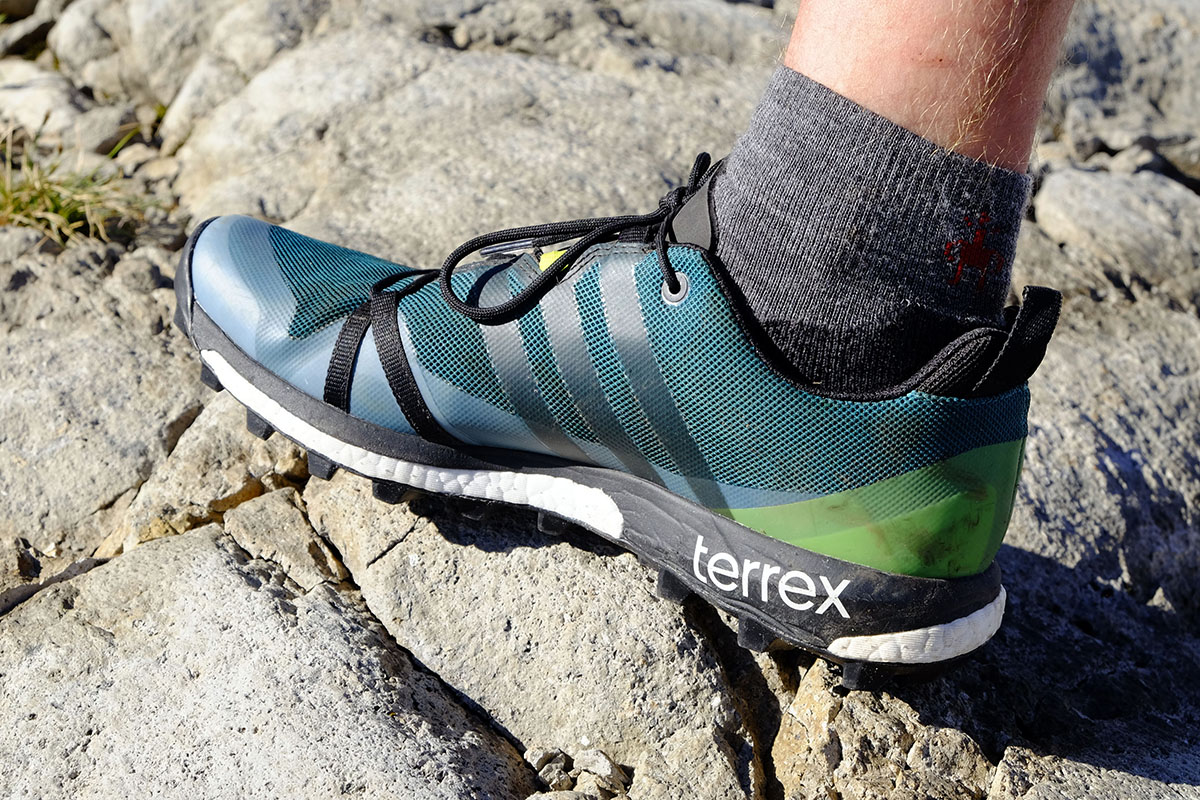
In fact, the Boost midsole, along with a low stacked height, makes the shoes an absolute standout for runs on hard packed dirt or even pavement. I prefer to stick to trails, but I’m in the process of training for a road race, so this hybrid use has been particularly helpful to me. Following a recent 16-mile run, with about 6 of those miles on pavement, my feet felt great—something I can’t say for similar runs with my Salomon Speedcross 4 or La Sportiva Wildcat. For those like myself that need to cover some miles on asphalt to get to dirt, the Agravic are a great match.
Stability is another strong suit and the feeling underfoot is of complete security. The shoe sits low to the ground, the Continental outsoles have a wide platform, and it’s stiff enough to power through rough sections of trail. I’ve even felt comfortable using the Agravic for extended day hikes and fastpacking. With about 25 pounds on my back, I didn’t experience any foot fatigue and I was impressed with the shoe’s lateral stability. We think they stack up well with other crossover hiking and trail-running shoes, like the Brooks Cascadia. Within the trail-running shoe crowd, the Terrex falls midpack in terms of stiffness—it’s more rigid than the Saucony Peregrine 6, but more forgiving than a dedicated mountain shoe like the La Sportiva Bushido.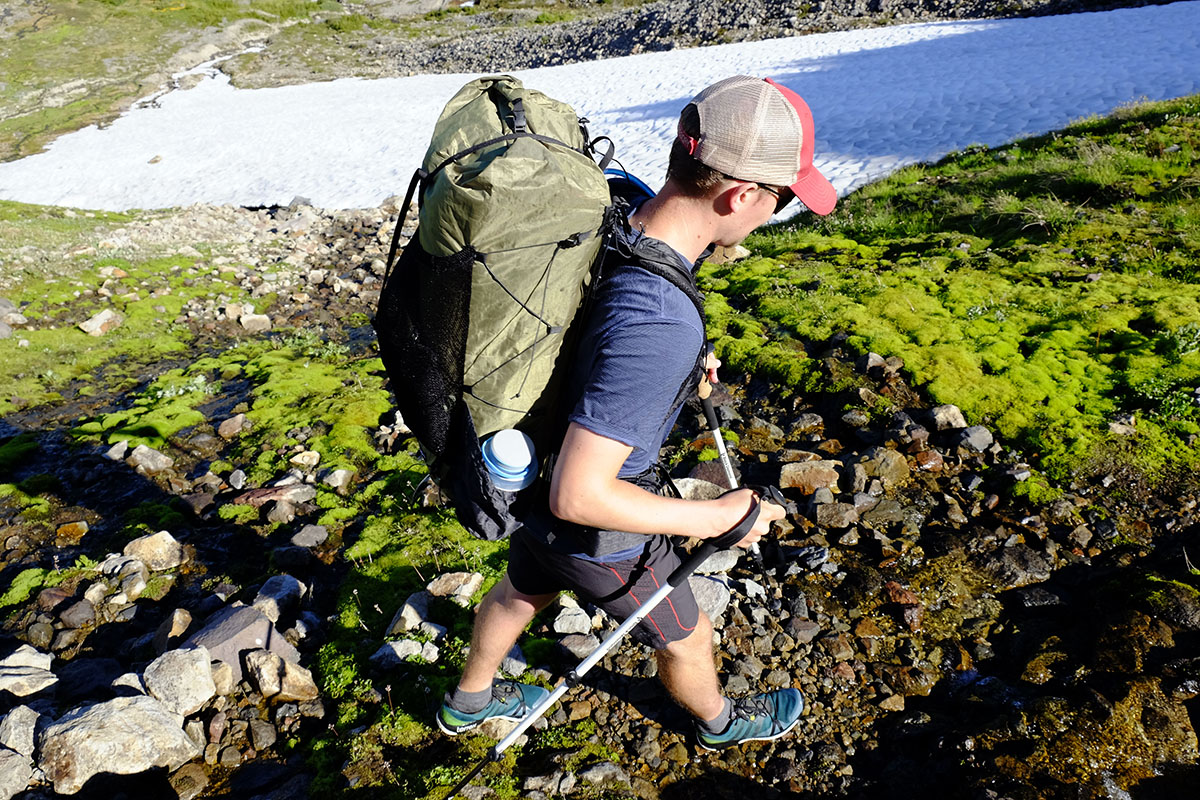
I’m wearing my typical running shoe size with the Agravic and have found it fits about as expected. My heel and forefoot are slightly narrow, but I fit most “average” width shoes and haven’t had any issues with heel slippage or discomfort. Those with wide feet may find the Agravic too tight, but if you’re comfortable with other performance-oriented shoes from Salomon or La Sportiva, it should work just fine.
In terms of comfort, the Adidas Outdoor Terrex Agravic has a neutral feel and is great for even long stretches. The wide tongue feels almost rubbery in hand, but the EVA foam conforms nicely around the top of the foot. The lacing system does a nice job of keeping everything locked in place, and I particularly like the wide set eyelets near the base of the toes that pull the fabric in evenly. Again, those with wider feet may find that the laces pinch at that point, but I think the lacing system should work well for most people.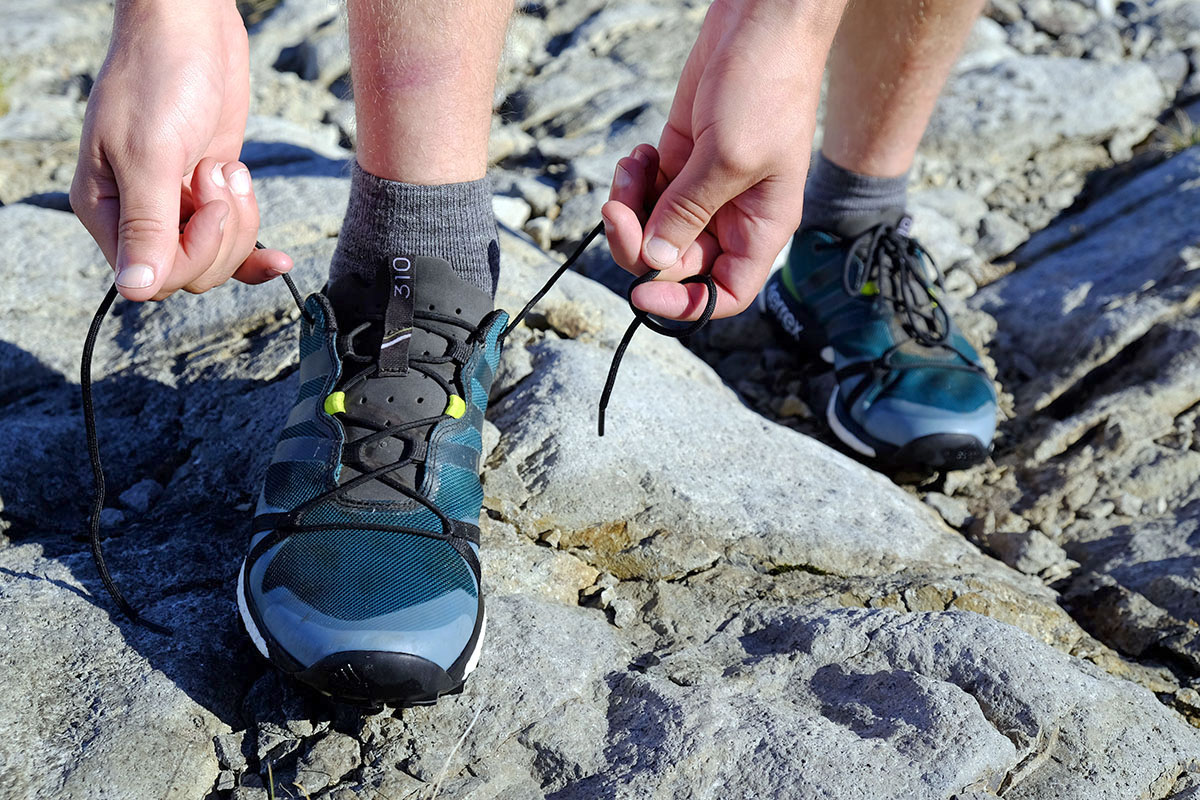
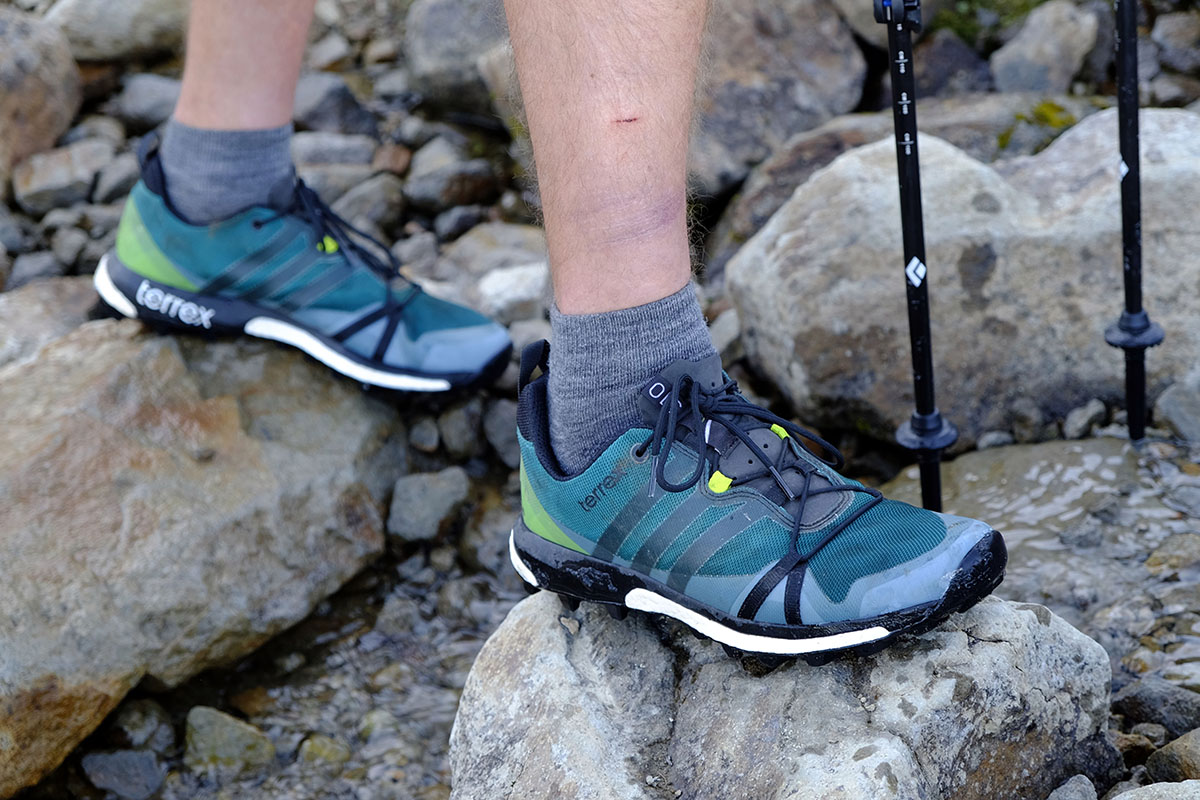
| Shoe | Price | Category | Cushioning | Weight | Drop |
|---|---|---|---|---|---|
| Adidas Outdoor Terrex Agravic | $135 | Mountain / light trail | Moderate | 1 lb. 8 oz. | 6mm |
| La Sportiva Bushido | $125 | Mountain / light trail | Light / Moderate | 1 lb. 5 oz. | 6mm |
| Salomon Speedcross 4 | $130 | Mountain / light trail | Moderate | 1 lb. 6 oz. | 11mm |
| Saucony Peregrine 6 | $130 | Light trail / mountain | Moderate | 1 lb. 2.8 oz. | 4mm |
| Brooks Cascadia 11 | $120 | Light trail / mountain | Moderate | 1 lb. 7 oz. | 10mm |
The all-new Adidas Terrex Agravic enters a highly competitive trail-running shoe market, but even with a price tag of $135, we think it holds its own. It’s a far more serious shoe than the popular Brooks Cascadia 11 and Saucony Peregrine 6, which are lighter but less stable. For its durability and technical prowess, one of its most formidable competitors is the La Sportiva Bushido. The two are quite comparable in terms of traction, but the Bushido gets the slight edge in weight and is the better option for long distances (see our in-depth review). If you prefer a cushioned ride, however, the Agravic’s Boost midsole is more comfortable and offers better isolation from sharp rocks than the thin Bushido.
Another shoe designed for rough trails is the Salomon Speedcross 4. The tall, arrow-shaped lugs are class leading for soft terrain and mud, and we’ve found the Salomon’s are nicely cushioned for rocky trails (read the full review). But as an all-around shoe, I’ve been surprised to find myself preferring the lower stacked height of the more stable Addias. If weight and traction are the priority, the Speedcross is still best. But for daily training and the occasional hike, I recommend the Terrex Agravic.